My "Smart Home" on the PLC and with the web interface. Part 1. Introduction
Introduction
Habré has a lot of articles about smart home projects, but almost all of them were on home-made equipment and Chinese lotions. In my article I wanted to talk about a different approach, which shows how much easier it is to carry out projects using ready-made solutions from global manufacturers ( and it looks more solid ), and also demonstrates the possibility of using equipment not only in industrial facilities, but in the private sphere. The result is a symbiosis of technology and areas of automation. On the one hand, using a PLC, which is mainly designed for the needs of the industry, allows you to perform tasks of any complexity without restricting the hard algorithms of ready-made smart home devices (for example, using KNX technology) coupled with html / javascript web technology gives you unlimited flight of fantasy to expand projects .
Current costs - 170 thousand rubles (at the old euro exchange rate).
Let's start.
What am i up to
We manage lighting and power supply
- Basically, the control will be made by an on / off signal, dimming is not wanted and not necessary;
- I want control from different places, for example, I went into the bedroom - turned on the chandelier, lay down on the bed - pressed to turn off the chandelier. If you forgot to turn off the light in the hall (or in the toilet ...) I pressed the button "turn off the light everywhere." Conveniently;
- When leaving the apartment I press one button - the light turns off in the whole apartment, etc .;
- Read the reading from the electric meter;
- Uninterrupted power supply control systems and apartment security;
- Without exception, all lighting groups must be controlled from the PLC. In the event of a fire, the socket groups should be disconnected from the PLC in the machine - disconnect the power supply in the apartment in case of emergency;
- Each lighting group must come to the shield and pass through the nearest switch to enable the lighting control to be converted into a regular circuit (if I sell the apartment, I will take everything);
- In the corridor, to provide a person's motion sensor to control the lighting + is tied to the security alarm;
- Warm floor on the balcony, in the toilet, bathroom, in the hallway - with the ability to control depending on the outdoor temperature, over time.
')
We manage heating and ventilation
- Heating control - a valve with an actuator is installed on each battery (to regulate the temperature from room to room, to measure the temperature of the room, temperature sensors must be provided);
- Provide control of air conditioners via the IR channel (the current solution to the problem has not yet been found, we output the twisted pair cable to the internal unit and come up with the next unit);
- Temperature sensors outdoor temperature (sunny and not sunny side);
- In winter, two problems are quite common - it is cold and there is nothing to breathe. The decision to install the supply system. Next, provide control of the supply system (duct temperature, outdoor temperature sensor, three heating stages, fan);
- Control of exhaust fans (bathroom, bathroom).
Security alarm
Signaling the state of the entrance door (archiving the state of the door - time to open / close);
Arming through the Web interface or through the light control switch.
CCTV
Recording from the front door camera, street parking place;
Archiving records on a remote server.
Equipment
- Since I was used to the ABB PLC, the AC500-eco PLC ( Ethernet-enabled PM554-ETH CPU ) was chosen as the brain for the apartment management system;
“Then I started counting money and ... it was necessary to choose an environment for displaying information, with the possibility of a web displaying information about a house. There are many options, but basically everything is based on non-cross-platform solutions, which is not suitable for me. All that with the words SCADA and WEB, was with an exorbitant price tag. I had to pop a little, as a result, it was decided not to use the SCADA system, but a framework with more functionality for HTML5. Came to CSWorks. This free-form gives you the opportunity to use for free with a limit of 999 variables, 1 client. What completely suited me.
- JUNG, Serie A was selected as switches and sockets (light control body). From the pros - they can carry up to 4 buttons on one push-button post (a switch without latching), they also have indication LEDs with a voltage of 24V (this voltage is a standard industrial supply voltage for automation systems). These functions are not seen by any of the manufacturers of electrical installations (excluding China);
Beginning of work
1. The way of lighting wiring. Each group comes directly into the power supply cabinet. In the cabinet are contactors and relays for control. The coils of the relay and contactors are controlled by PLC signals (DC24V). For redundant control using manual contactors. The power wire made passing through the switch glass, so that it was possible to rework the wiring to a conventional circuit.
Scheme:
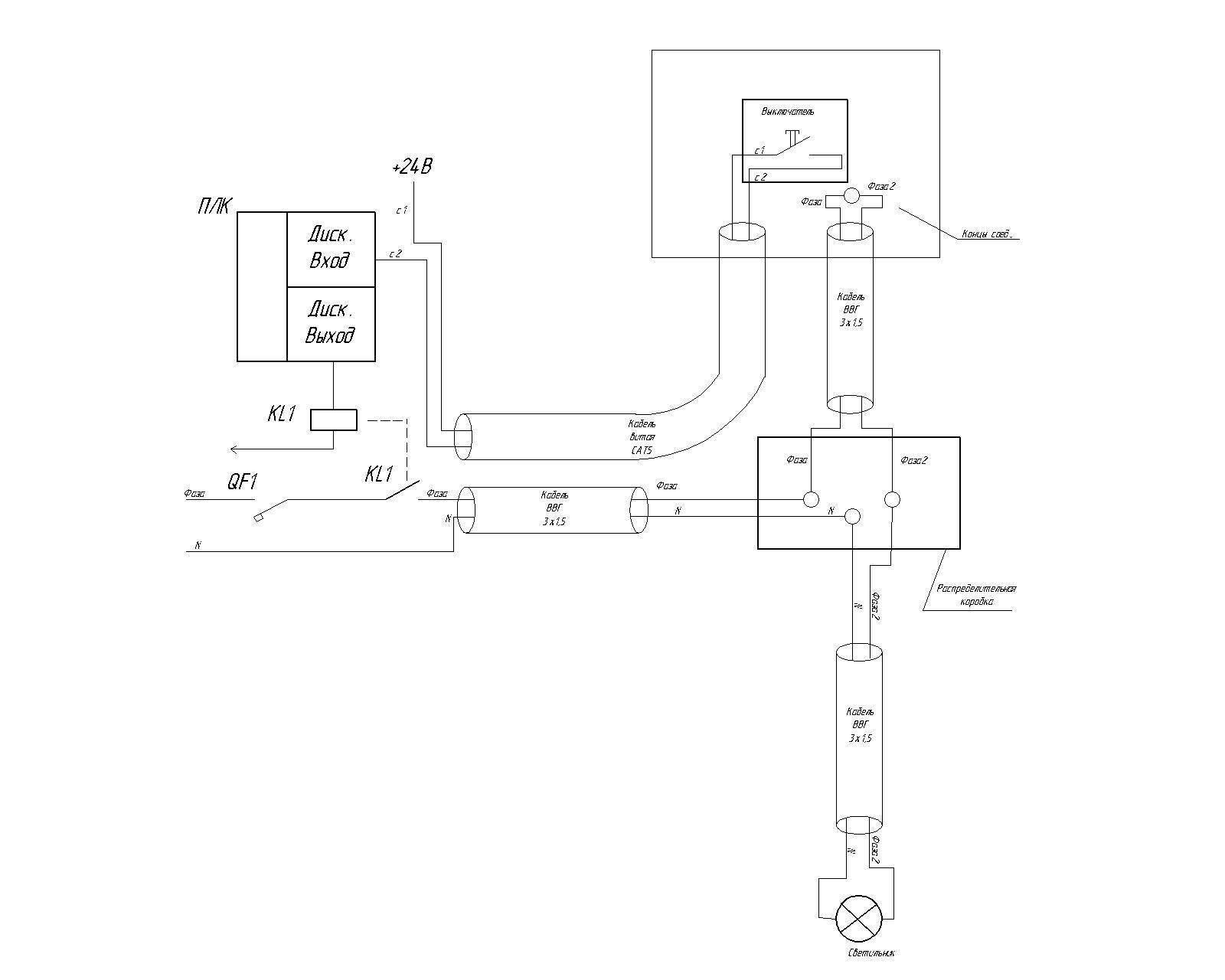
Manual contactor itself:
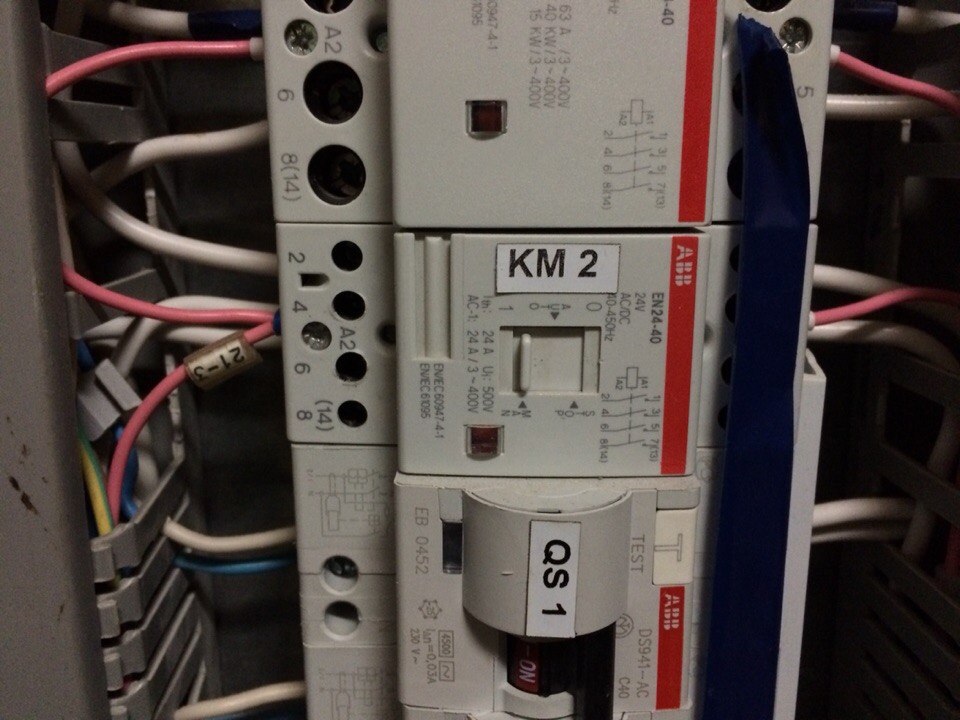
Assembled and assembled cabinet:
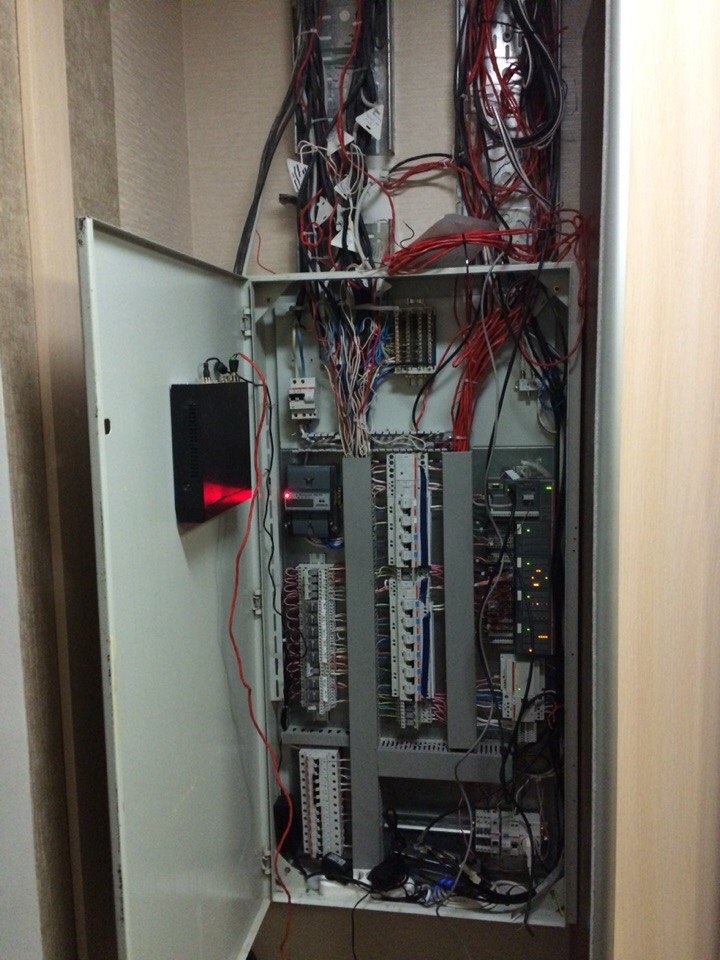
Scheme:
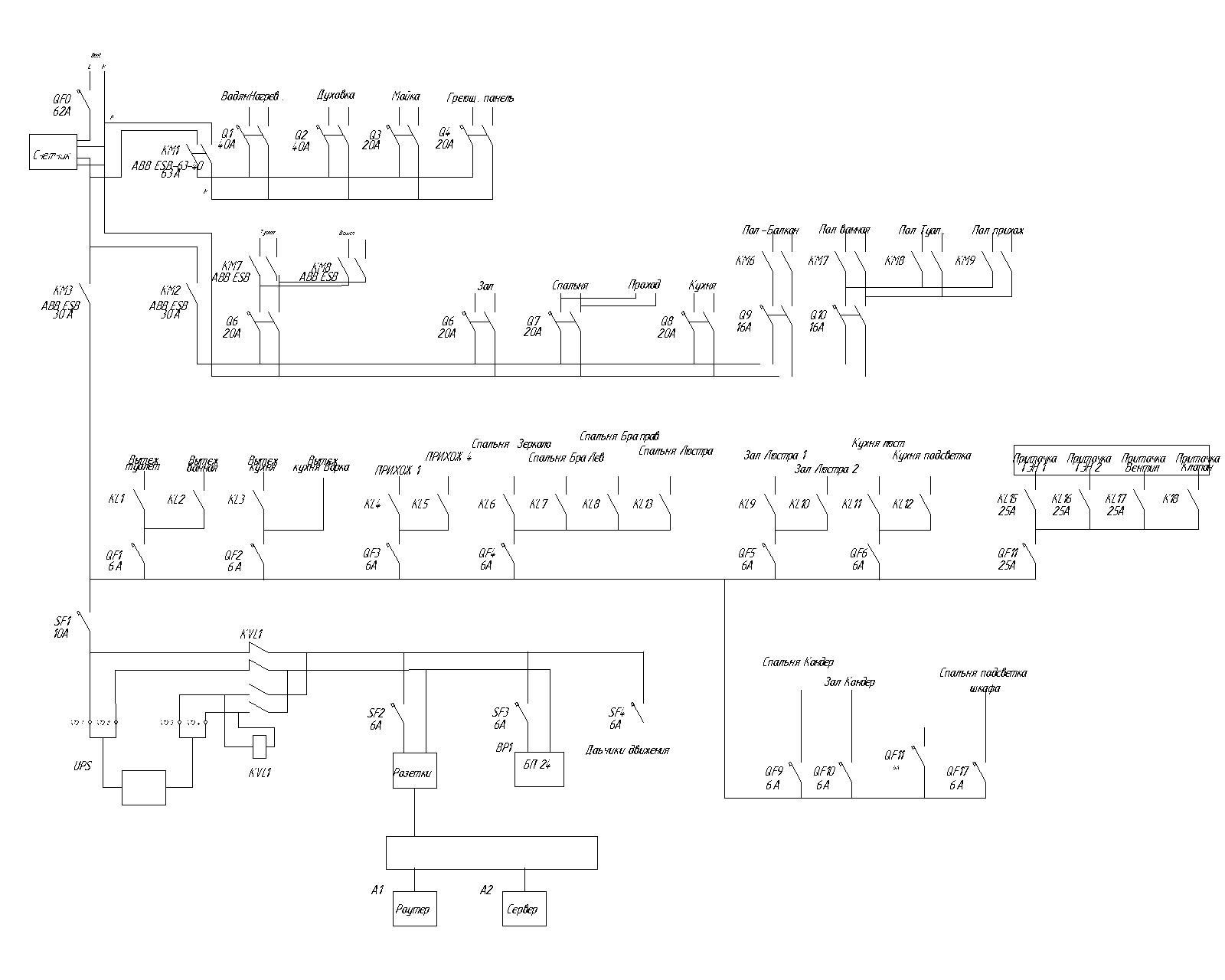
As I wrote above, I chose switches without fixings with led indicators. A maximum of 4 buttons, these buttons can be disconnected into 8 groups (see the switch documentation of the JUNG 4248TSM switch .
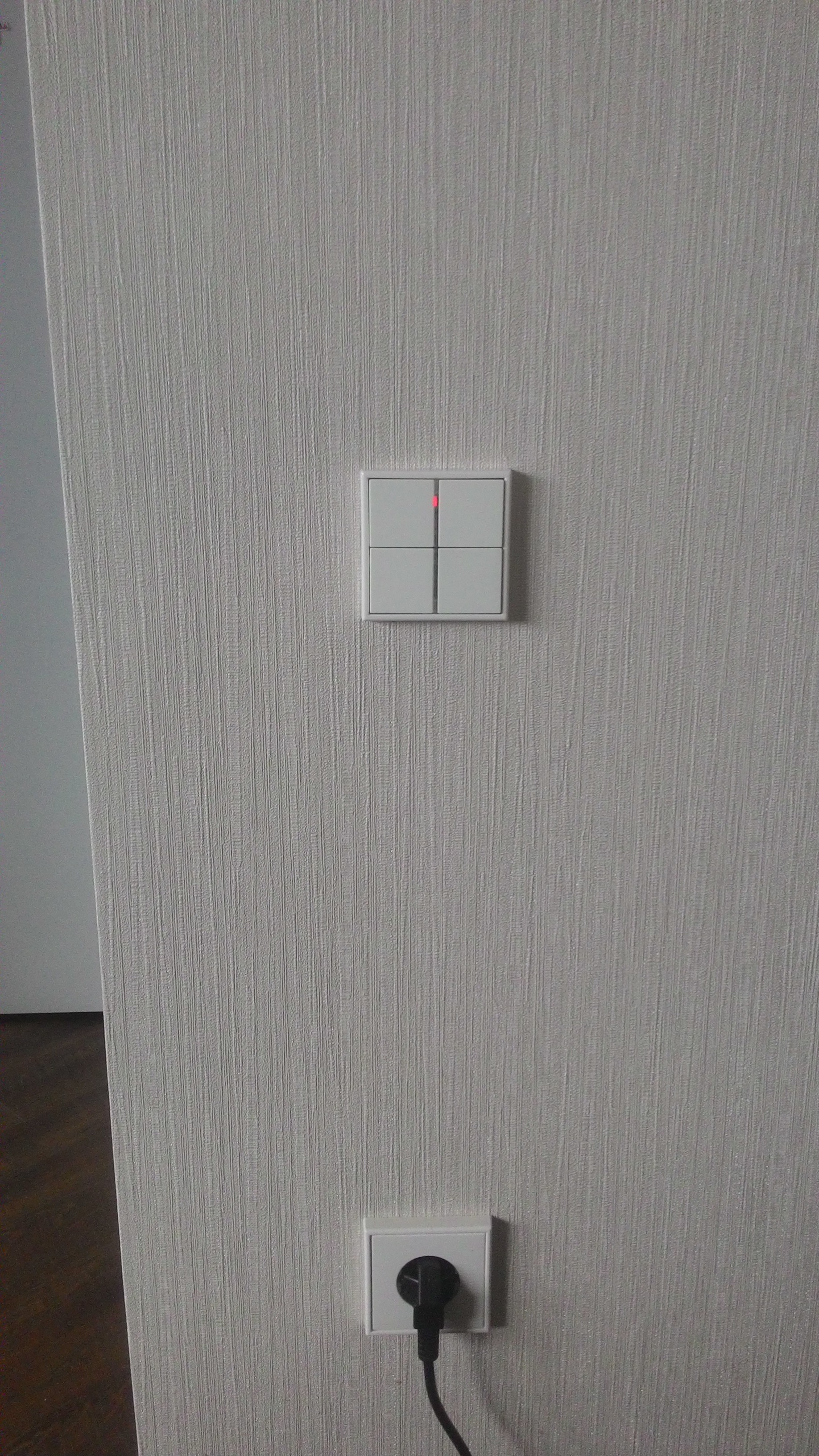
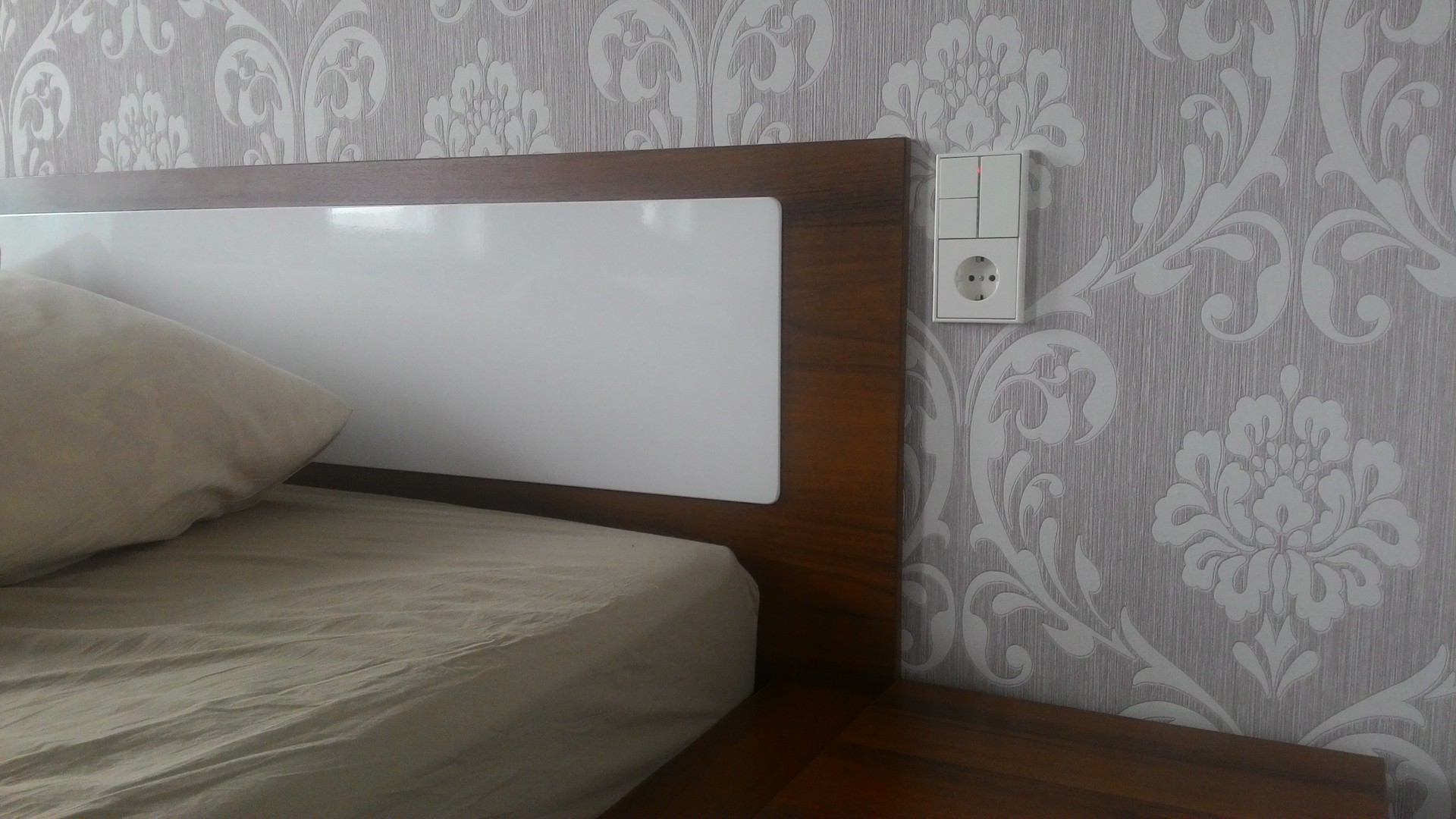
In the following parts, the implementation of the project will be discussed in more detail.
Looking ahead, I open the screenshots of the web interface:
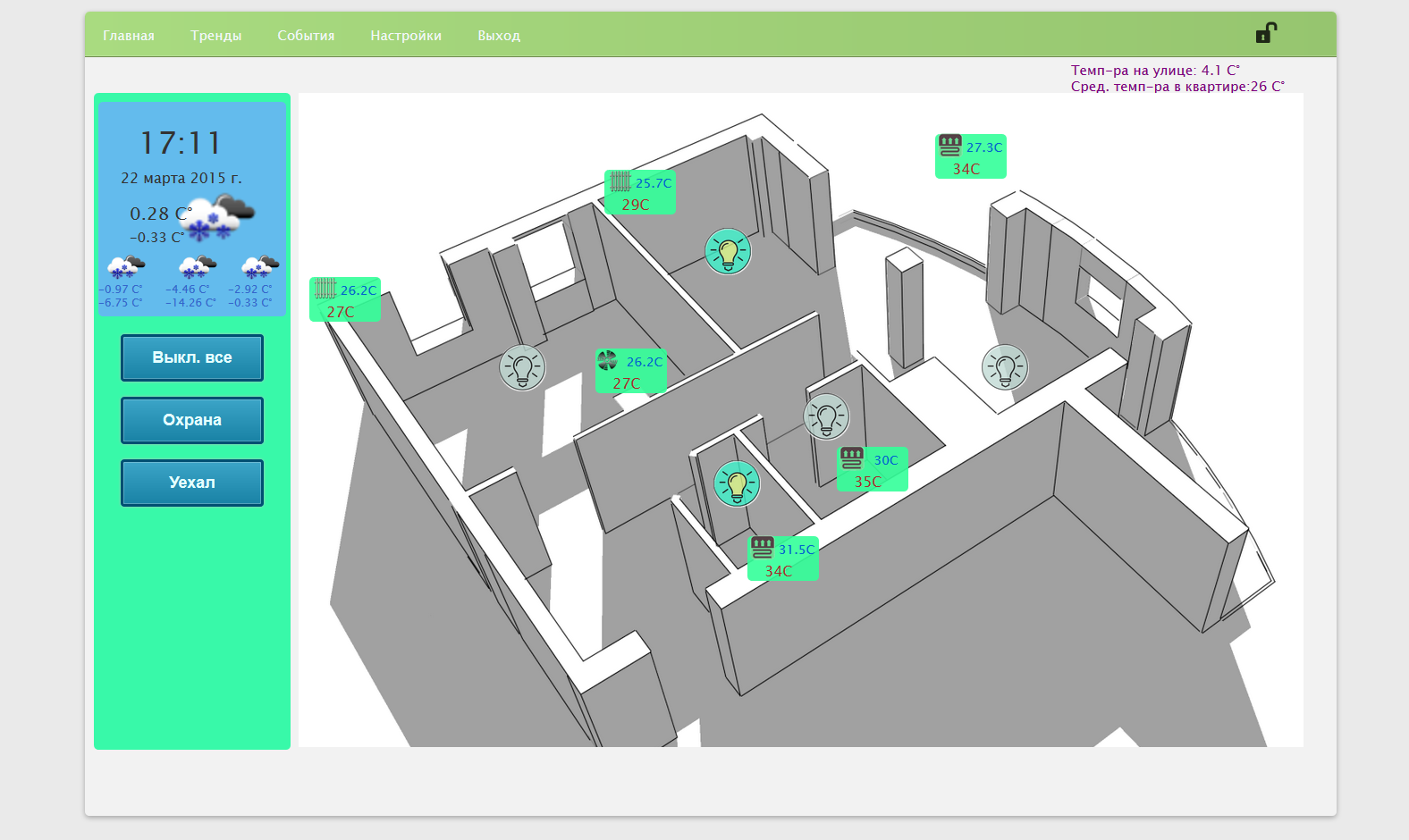

Source: https://habr.com/ru/post/254199/
All Articles